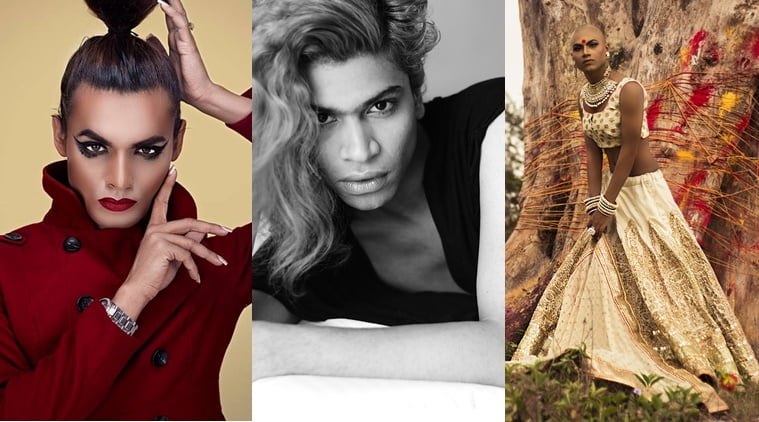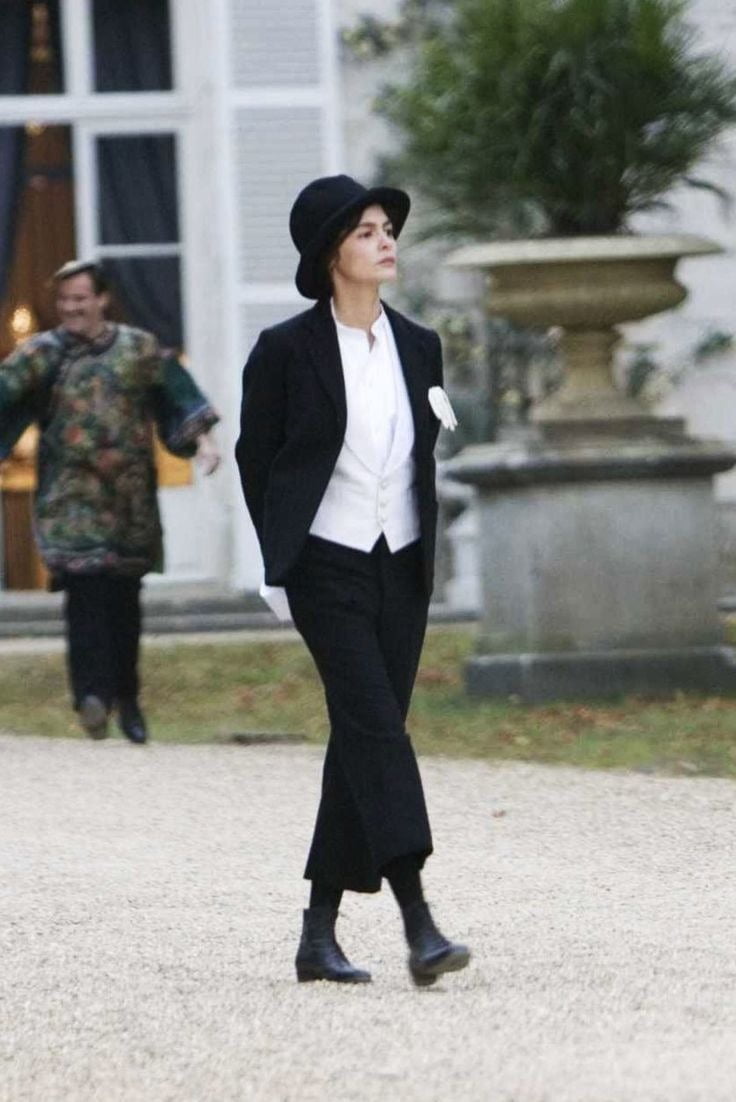Personal style and clothes, despite being the most expressive representation of the self, is also the most common indicator of gender in society. Almost no other area, besides public washrooms perhaps, is so strictly gendered as the clothing stores. The division between the genders are marked clear as day, often on completely different floors, if not in completely different stores. In such a context, blurring the lines of gender roles and introducing androgyny is revolutionary.
Androgyny in Women’s Fashion
Throughout history there has been countless examples of women doing male garbs before taking on leadership or pioneering roles. Stories of Pharaoh Hatshepsut with her false beard, and Joanne of Arc in her male armour, all give terrifying examples of women suppressing their femininity to be taken seriously in their workplace.
Also read: The Dark Side Of Fast Fashion Your Favourite Brands Are Hiding
In the 20th century, encouraged by the suffragettes movement, women began abandoning the stuffy Victorian skirts, gowns, and petticoats for every day pants. In 1910, androgyny was introduced to the world of high fashion when Coco Chanel created pants for women. She strongly defended the idea that women should dress according to how they feel, not how their gender tells them to feel. Following this idea, she created, normalised, and even glamorised, the masculine wide shoulders, stiff collars, and loose belted jackets for women. Androgyny in ‘women’s’ fashion has developed and improved with the growth of feminist movement. However this was not the case for men’s fashion which stayed within the clean-cut lines of pants, waist coats and ties.
1910s: Coco Chanel Gave Women The Gift Of Pants
Androgyny in Indian culture
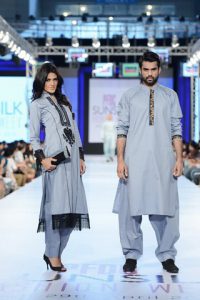
Image Source: Style PK
Despite men’s clothing staying within the strict lines of their gender expectations in the west, it was not the case in India. Almost all traditional garments have been modified and by both genders and sexes through the centuries, making traditional Indian garments incredibly gender fluid. For example, the nauvari sari in Maharashtra is draped similarly to the masculine dhoti. In fact the dhoti though officially considered a masculine garment was very often worn by women too. The mundu or lungi in south India (a long cloth wrapped around the waist like a skirt), is worn by predominantly men, and despite it’s similarity with the feminine skirt, is considered supremely masculine. Even kurtas and salwar kameez are worn by both men and women equally.
Such blurred lines between the genders is also heavily present in Hindu mythology. Several major gods very often have multiple forms and avatars of the opposite genders. For example Lord Vishnu’s avatar Mohini is female. Furthermore, non binary gods are also quite common in Hinduism, with the examples of Lord Ardhanarishvara and Lakshmi-Narayana who are often seen in both male and female garments. This ambiguous gender divisions extends to jewellery as well. Very often we have seen Emperors far more heavily decked than their wives. Men are not limited by sobriety and simplicity as in the West.
non binary gods are common in Hinduism, with the examples of Lord Ardhanarishvara and Lakshmi-Narayana who are often seen in both male and female garments
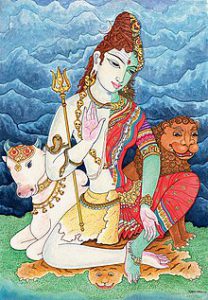
Image Source: Wikipedia
However the colonialist erasure and suppression of ethnic cultures replaced these gender fluid garments with Western ‘civilised’ clothing, and traditional Indian garments are no longer considered appropriate for in formal structures. With especially male clothing became increasingly restrictive. Today though women are very often seen in masculine pants, jackets, and shirts it is considered incredibly and remarkably ‘lame’ to find men wearing feminine garments without having their sexuality and masculinity questioned.
Androgyny in Men’s Fashion
I’m sure most of us can remember thinking (however grudgingly) that a man wearing a pink shirt was equivalent to him coming out of the closet. Unlike women’s, the garment industry has not made the same progress of acceptance and inclusivity with male garments. This is a clear indication of the overwhelming toxic masculinity that is prevalent in our society.
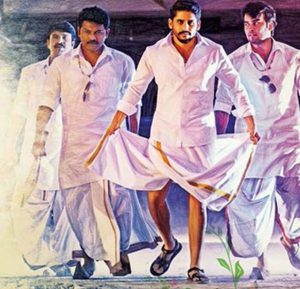
Image Source: Great Telangaana
In the face of rising feminism and destruction of the gender roles, masculinity has been desperately clutching to all it can to maintain relevance. The sheer intensity of the prejudice and backlash men face when they deviate the slightest bit from the prescribed choices almost makes it seem as though the definition of masculinity is being ‘not feminine’. This can be most famously seen in the reactions to Ranveer Singh’s unconventional outfits.
fashion has become a tool through which both men and women can freely explore their gender and sexual identity.
However, much of this is changing today. The rise of the fourth wave feminism pushing ideas such as inclusivity and intersectionality to the forefront as highlighted the oppression men face at the hand of patriarchy. This has encouraged men to step out of their strict arena of masculinity and explore themselves and their identity further. Applying Chanel’s idea of dressing the way you feel, not the way you are instructed to men.
Androgyny and the LGBTQ+
Much of this progress is also the result of the LGBTQ rights movements. Fashion is one of the few industries where traditionally homosexuality ceased to be an issue. Many famous and iconic designers were and are proud of their sexuality. They encourage the expression of one’s identity and self through their outfits, inviting men to put thought and effort to their image, their clothing, as women do. Here the ideas of femininity and masculinity become blurred, making fashion almost a political statement not simply a trend.
Today there is an unprecedented increase in the visibility of trans and non binary models in the mainstream fashion industry. This shows how fashion has become a tool through which both men and women can freely explore their gender and sexual identity.
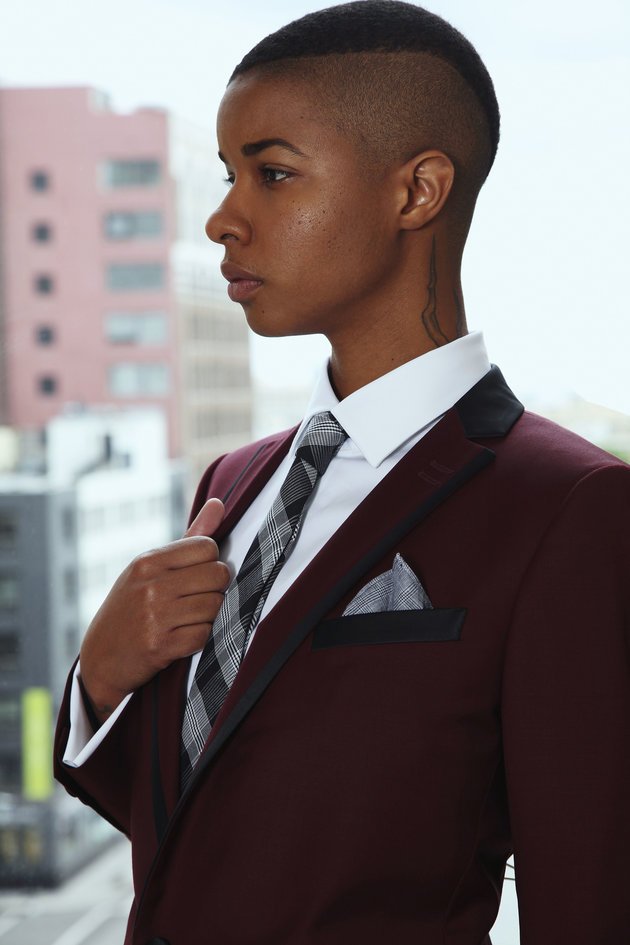
Sharpe Suiting creates suits for butch, androgynous and masculine-of-center individuals.
In the last decade there has been an unusual exploration within Indian male fashion. Designers such as Wendell Rodricks, Arjun Saluja, Rohit Bal, Tarun thalami, and many more are softening their male figures, adorning them with motifs of flora and fauna in sweeter, more feminine colours, reducing their severe cuts and lines for more free-flowing designs. Designers such as Alan Alexander Kaleekal have taken this shift in male fashion to explore and reconstruct the modern shirt with attributes of the traditional Indian gender fluid garments.
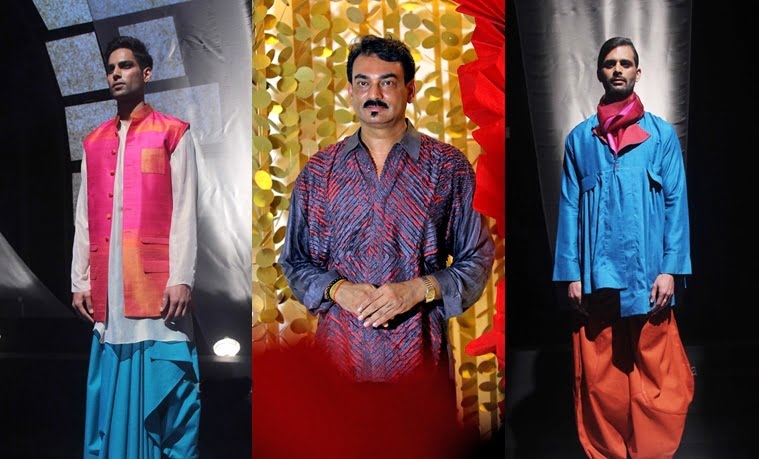
Wendell Rodricks, Express Archive; LFW Summer Resort 2016
Fashion though considered ‘frivolous and shallow’, is an extremely powerful tool of social change. As a reflection of the times clothing a direct source of personal expression as well as the expression of the society. It must not be restricted but allowed to change, adapt, and evolve as should one’s personality and identity.
Also read: The Changing Face Of Indian Fashion: Can It Be Feminist?
Featured Image Source: The Indian Express
About the author(s)
Leah is pursuing a bachelors degree in social science. She feels very strongly against the binary perception of gender and sexuality as well as the oppression stemming from the economic class systems.
